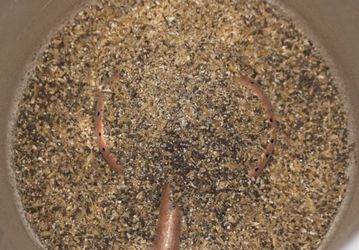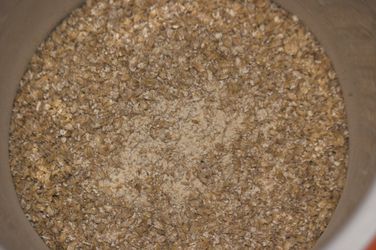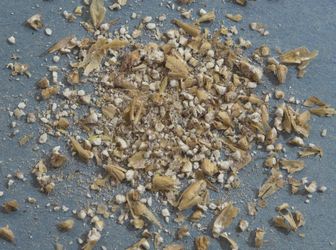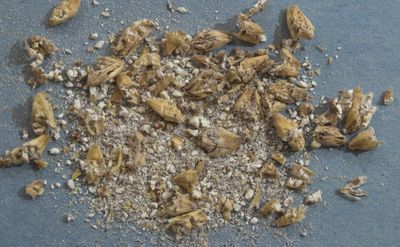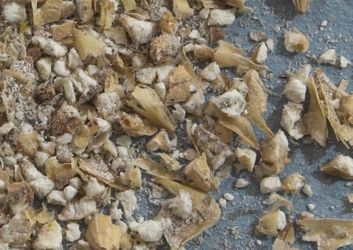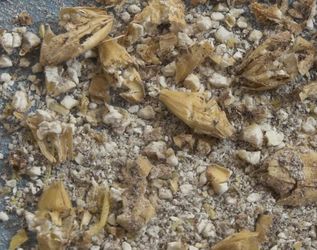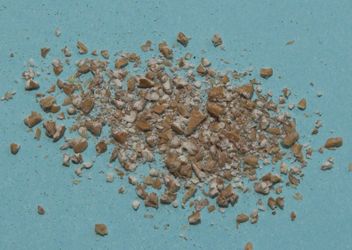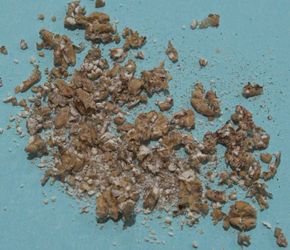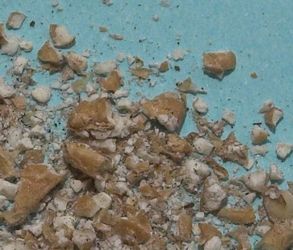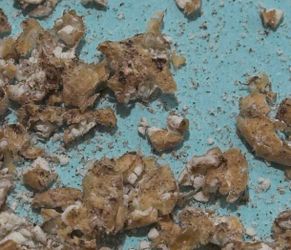Difference between revisions of "Malt Conditioning"
(→How it's done) |
(→How it's done) |
||
| Line 20: | Line 20: | ||
|- | |- | ||
| | | | ||
| − | [[Image:Crush_dry.jpg|thumb|400x250px|[[Crush_dry.jpg (full size)]]]] | + | [[Image:Crush_dry.jpg|thumb|400x250px|[[http://troesterfamily.com/brewing/wiki/images/9/9e/Crush_dry.jpg (full size)]]]] |
| | | | ||
[[Image:Crush_conditioned.jpg|thumb|400x250px|]] | [[Image:Crush_conditioned.jpg|thumb|400x250px|]] | ||
Revision as of 05:10, 25 February 2008
When malt is crushed not only the endosperm is crushed, but also the husks which should remain intact as much as possible since they are needed as the filter bed for lautering. Depending on the tightness of the crush, enough of the husks generally remains intact to allow for smooth lautering. Besides impeding the run-off during the lauter, overly shredded husks can also contribute to astringent flavors. During the mashing process, tannins are extracted from the husks. This tannin extraction can get over the taste threshold if the pH is to high and/or the sparge water is to hot. But husk-dust can also cause excessive tannin extraction due to the significantly increased surface area of the husk material.
To alleviate lauter problems and/or astringent off-flavors, many commercial brewers either condition their malt before crushing or crush their malt wet (wet crushing). The latter is also done to reduce the O2 intake during milling and dough-in process in a modern low O2 brewhouse, but is fairly impractical for the home brewer as it requires milling grain that is already mixed with some of the mash water.
Malt conditioning can however be employed by the home brewer. But it is strongly recommended NOT to do this with mills in home brew stores due to the risk of making a mess. In order to condition malt, the moisture content of the malt is raised by about 2% [Narziss, 2005] with the use of low temperature steam or a very fine spay of water. 2% is a very small addition of water. For a 5kg (11lb) girst) this is only 100ml (3oz) of water. This moisture collects in the husks of the malt which become much more pliable as a result of this treatment. If to much water is used for the conditioning, it is not completely absorbed by the husks and will cause malt flour to stick to the roller of the mill. If this happens try to run some dry malt through the mill to clean it up.
How it's done
To condition the malt put the malt in a bucket and use a spray bottle of water to spray the top of the malt a few times. Now mix the malt and repeat. You want to distribute the added moisture as evenly though the malt as possible. Soon the malt's feel with become less like dry straw and more like leather. Once it looses it's dry feeling and a few of the kernels start to stick to your hands let the malt sit for a few minutes to let the husks soak up the moisture. Get the mill ready and set it fairly tight. After all, you conditioned the malt to be able to crush it tighter. When you mill the malt you will notice that once in a while a crushed kernel will stick to a roller of the mill. This is ok and it only becomes a problem if a dough starts to build up on the rollers. In this case you used to much water. Run some dry malt through the mill to remove the dough.
After crushing a hand full, look at the crush. You want to see kernels that look more flattened (like oatmeal) than crushed. Pick them up and the endosperm should be dry and come out easily. If this is the case you can continue crushing the rest. If they still look more broken than flattened add more moisture and try again. In the beginning you may want to stay on the safe side and don't add to much water to avoid the risk of doughing-up the rollers.
|
dry crushed malt |
conditioned crushed malt |
|
When you mill conditioned grain it will not as easily flow from the hopper into the mill. If it starts to stall, agitate the hopper or use a stick to help it along. Do not use your fingers especially of the mill is motor driven.
Here are pictures to illustrate the difference between the crush of dry and a conditioned malt at the same setting of the mill (JSP Maltmill, 19mil/0.48mm)
|
dry malt crushed |
conditioned malt crushed |
|
After doughing-in, you will notice that the malt does mot settle as densely as dry crushed malt. This is expected as the remaining husk pieces are larger.
Conditioning Wheat Malt
Wheat malt can be conditioned as well. Though there is no husk, wheat malt still has an aleurone around the endosperm, which can be preserved fairly well by malt conditioning. This process allows brewing wheat beers with a high percentage of wheat malt without the use of a lautering aid like rice hulls.
|
dry wheat malt crushed at 12 mil / 0.41 mm |
conditioned wheat malt crushed at 12 mil / 0.41 mm |
|
Common Concerns
Can conditioned malt be crushed the night before breweing?: Yes it can. The added moisture is not enough to cause spoilage.
Will it cause my mill rollers to rust?: No, it shouldn't do that. There is not enough moisture in the malt to cause rusting on the rollers. I haven't seen any and don't own a mill with stainless steel rollers.
Is it all worth it?
With the additional work and the risk of making a mess out of the mill, the question remains if conditioning the malt is worth it for the home brewer?
I think that this is an advanced technique for the home brewer and that you should not worry about it as a beginner and even a veteran should only try it when there is interest in this subject. With proper pH and sparge temperatures, tannin extraction from the husks is not a problem anyway and if the crush is not to aggressive, the lauter will run just fine.
I like to do this because it seems to make sense and once I figured out how the malt should feel, there were no more messes with the mill either. The mash seems better suspended, which should be a good thing especially with thin mashes, but the lauter can still get stuck when using lots of grain. But that must have to do with the amount of flour that is produced with a tight crush.
Every brewer has to see for him or herself and this is definitely not a must do for excellent beer.
--Kaiser 20:51, 27 December 2007 (CST)
